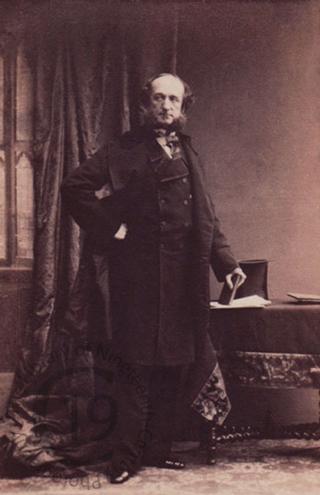
Marquis d'Azeglio
A carte-de-visite portrait of the Marquis d’Azeglio (1816-1890), Piedmontese ambassador.
Victor Emanuel Taparelli, Marquis d’Azeglio, was, according to the Illustrated London News (24 November 1855), the son of Roberto d’Azeglio and the brother of Massimo Taparelli, Marquis d’Azeglio, the Italian statesman, soldier, novelist and painter who played an important role in the Risorgimento.
His early tastes led him to study art, but he embraced the diplomatic profession, and, after filling various subordinate positions in Munich, Vienna, the Hague, Brussels, St. Petersburg and Paris, on 13 November 1850 he was appointed Envoy Extraordinary and Minister Plenipotentiary from Turin to the Court of St. James, and afterwards Ambassador of the King of Italy to her Britannic Majesty. According to Men of Our Times (1872) he was recalled from London in 1869, but according to Vanity Fair (20 June 1874) he “translated himself into an English Marquis, and came to London, which he has never left, save for mere flying visits to the Continent.”
In 1860 Silvy photographed the Sforza manuscript, a Renaissance illuminated text belonging to the Marquis d’Azeglio. The results were published by Silvy as a slim volume of 16 photographs, with, as an introduction, the speech written by Silvy (in French) and read out, on his behalf, to the Académie Impérial des Inscriptions et Belles-Lettres in Paris on 21 September 1860. In the speech, he drew the Academy’s attention to the advantages to be derived from the photographing of ancient manuscripts, in that, the collodion being sensitive to a slightly different colour spectrum than the human eye, details previously invisible became visible when reproduced in a photograph.
Photographed by Camille Silvy of London in 1860.
Code: 124692




